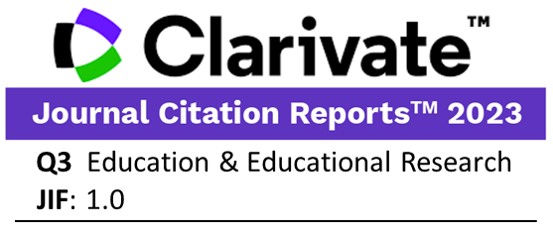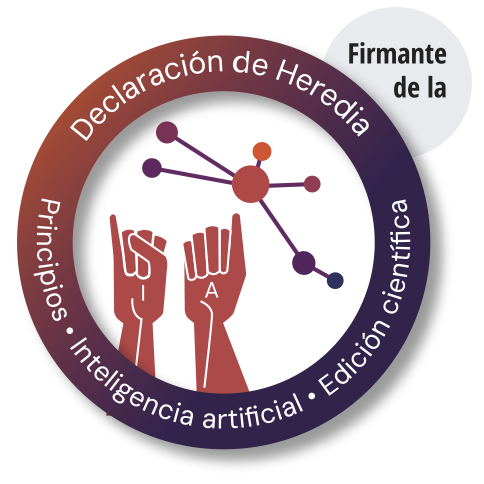Cognición situada y estrategias para el aprendizaje significativo
Palabras clave:
Cognición situada, enfoque sociocultural, estrategias de enseñanza, aprendizaje significativo, enseñanza experiencial, facultamiento.Resumen
Se describen los principios del paradigma de la cognición situada vinculado al enfoque sociocultural vigotskiano que se afirma que el conocimiento es situado, es decir, forma parte y es producto de la actividad, el contexto y la cultura. Se destacan la importancia de la mediación, la construcción conjunta de significados y los mecanismos de ayuda ajustada. Se ejemplifican algunos enfoques instruccionales que varían en su relevancia cultural y en el tipo de actividad social que propician. Se presenta un conjunto de estrategias para el aprendizaje significativo basadas en una enseñanza situada y experiencial (solución de problemas auténticos, aprendizaje en el servicio, análisis de casos, proyectos, simulaciones situadas, entre otros), y se concluye en términos de su potencialidad para promover el facultamiento.Descargas
Los datos de descarga aún no están disponibles.
Referencias
Ausubel, D. (1976). Psicología educativa. México: Trillas.
Baquero, R. (2002). Del experimento escolar a la experiencia educativa. La transmisión educativa desde una perspectiva psicológica situacional. Perfiles Educativos, 24 (96-97), pp. 57-75.
Bereiter, C. (1997). Situated cognition and how to overcome it. En D. Kirshner y J. A. Whitson (Eds.), Situated cognition. Social, semiotic and psychological perspectives (pp. 281-300). Mahwah, NJ: Lawrence Erlbaum.
Brown, J., Collins, A. y Duguid, P. (1989). Situated cognition and the culture of learning. Educational Researcher, 18 (1), 32-42.
Claus, J. y Ogden, C. (1999). An empowering, transformative approach to service. En J. Claus y C. Ogden (Eds.), Service learning for youth empowerment and social change (pp. 69-94). Nueva York: Peter Lang.
Daniels, H. (2003). Vygotsky y la pedagogía. Barcelona: Paidós.
Derry, S., Levin, J. y Schauble, L. (1995). Stimulating statistical thinking through situated simulations. Teaching of Psychology, 22 (1), 51-57.
Dewey, J. (1938/1997). Experience & Education. Nueva York: Simon & Schuster.
Díaz Barriga, F. y Hernández, G. (2002). Estrategias docentes para un aprendizaje significativo. Una interpretación constructivista (2ª. ed.). México: McGraw Hill.
Engeström, Y. y Cole, M. (1997). Situated cognition in search of an agenda. En D. Kirshner y J. A. Whitson (Eds.). Situated cognition. Social, semiotic and psychological perspectives (pp. 301-309). Mahwah, NJ: Lawrence Erlbaum.
Hendricks, Ch. (2001). Teaching causal reasoning through cognitive apprenticeship: What are results from situated learning? The Journal of Educational Research, 94 (5), 302-311.
Kilpatrick, W. (1921). Dangers and difficulties of the project method and how to overcome them: Introductory statement, definition of terms. Teachers College Record, 22 (4), 283-288.
Lave, J. (1997). The culture of acquisition and the practice of understanding. En D. Kirshner y J. A. Whitson (Eds.), Situated cognition. Social, semiotic and psychological perspectives (pp. 17-35). Mahwah, NJ: Lawrence Erlbaum.
Lave, J. y Wenger, E. (1991). Situated learning: Legitimate peripheral participation. Cambridge: Cambridge University Press.
Leontiev, A. (1978). Actividad, conciencia y personalidad. Buenos Aires: Ciencias del Hombre.
Luria. A. R. (1987). Desarrollo histórico de los procesos cognitivos. Madrid: Akal.
McKeachie, W. J. (1999). Teaching tips. Strategies, research and theory for college and university teachers. Boston, MA: Houghton Mifflin.
Neve, M. G. (2003). La cognición situada y la enseñanza tradicional. Algunas características y diferencias. Manuscrito no publicado, Universidad Iberoamericana, Puebla.
Palincsar, A. S. y Brown, A. L. (1984). Reciprocal teaching of comprehension-fostering and monitoring activities. Cognition and Instruction, 1, 117-175.
Posner, G. (1998). Enfoque de proyectos. En G. Posner, Análisis del currículo (pp. 181-190). Santafé de Bogotá: Mc Graw Hill.
Rogoff, B. (1993). Aprendices del pensamiento. El desarrollo cognitivo en el contexto social. Barcelona: Paidós.
Scardamalia, M. y Bereiter, C. (1991). Higher levels of agency for children in knowledge building: a challenge for the design of new knowledge media. The Journal of the Learning Sciences, 1(1), 37-68.
Vygotsky, L. (1986). Pensamiento y lenguaje. Buenos Aires: La Pléyade.
Vygotsky, L. (1988). El desarrollo de los procesos psicológicos superiores. México: Grijalbo.
Wassermann, S. (1994). Introduction to case method teaching. Nueva York: Teachers College Press, Columbia University.
Wenger, E. (2001). Comunidades de práctica, aprendizaje, significado e identidad. Barcelona: Paidós.
Yates, M. y Youniss, J. (1999). Promoting identity development: Ten ideas for school based service learning programs. En J. Claus y C. Ogden (Eds.), Service learning for youth empowerment and social change (pp. 43-67). Nueva York: Peter Lang.
Baquero, R. (2002). Del experimento escolar a la experiencia educativa. La transmisión educativa desde una perspectiva psicológica situacional. Perfiles Educativos, 24 (96-97), pp. 57-75.
Bereiter, C. (1997). Situated cognition and how to overcome it. En D. Kirshner y J. A. Whitson (Eds.), Situated cognition. Social, semiotic and psychological perspectives (pp. 281-300). Mahwah, NJ: Lawrence Erlbaum.
Brown, J., Collins, A. y Duguid, P. (1989). Situated cognition and the culture of learning. Educational Researcher, 18 (1), 32-42.
Claus, J. y Ogden, C. (1999). An empowering, transformative approach to service. En J. Claus y C. Ogden (Eds.), Service learning for youth empowerment and social change (pp. 69-94). Nueva York: Peter Lang.
Daniels, H. (2003). Vygotsky y la pedagogía. Barcelona: Paidós.
Derry, S., Levin, J. y Schauble, L. (1995). Stimulating statistical thinking through situated simulations. Teaching of Psychology, 22 (1), 51-57.
Dewey, J. (1938/1997). Experience & Education. Nueva York: Simon & Schuster.
Díaz Barriga, F. y Hernández, G. (2002). Estrategias docentes para un aprendizaje significativo. Una interpretación constructivista (2ª. ed.). México: McGraw Hill.
Engeström, Y. y Cole, M. (1997). Situated cognition in search of an agenda. En D. Kirshner y J. A. Whitson (Eds.). Situated cognition. Social, semiotic and psychological perspectives (pp. 301-309). Mahwah, NJ: Lawrence Erlbaum.
Hendricks, Ch. (2001). Teaching causal reasoning through cognitive apprenticeship: What are results from situated learning? The Journal of Educational Research, 94 (5), 302-311.
Kilpatrick, W. (1921). Dangers and difficulties of the project method and how to overcome them: Introductory statement, definition of terms. Teachers College Record, 22 (4), 283-288.
Lave, J. (1997). The culture of acquisition and the practice of understanding. En D. Kirshner y J. A. Whitson (Eds.), Situated cognition. Social, semiotic and psychological perspectives (pp. 17-35). Mahwah, NJ: Lawrence Erlbaum.
Lave, J. y Wenger, E. (1991). Situated learning: Legitimate peripheral participation. Cambridge: Cambridge University Press.
Leontiev, A. (1978). Actividad, conciencia y personalidad. Buenos Aires: Ciencias del Hombre.
Luria. A. R. (1987). Desarrollo histórico de los procesos cognitivos. Madrid: Akal.
McKeachie, W. J. (1999). Teaching tips. Strategies, research and theory for college and university teachers. Boston, MA: Houghton Mifflin.
Neve, M. G. (2003). La cognición situada y la enseñanza tradicional. Algunas características y diferencias. Manuscrito no publicado, Universidad Iberoamericana, Puebla.
Palincsar, A. S. y Brown, A. L. (1984). Reciprocal teaching of comprehension-fostering and monitoring activities. Cognition and Instruction, 1, 117-175.
Posner, G. (1998). Enfoque de proyectos. En G. Posner, Análisis del currículo (pp. 181-190). Santafé de Bogotá: Mc Graw Hill.
Rogoff, B. (1993). Aprendices del pensamiento. El desarrollo cognitivo en el contexto social. Barcelona: Paidós.
Scardamalia, M. y Bereiter, C. (1991). Higher levels of agency for children in knowledge building: a challenge for the design of new knowledge media. The Journal of the Learning Sciences, 1(1), 37-68.
Vygotsky, L. (1986). Pensamiento y lenguaje. Buenos Aires: La Pléyade.
Vygotsky, L. (1988). El desarrollo de los procesos psicológicos superiores. México: Grijalbo.
Wassermann, S. (1994). Introduction to case method teaching. Nueva York: Teachers College Press, Columbia University.
Wenger, E. (2001). Comunidades de práctica, aprendizaje, significado e identidad. Barcelona: Paidós.
Yates, M. y Youniss, J. (1999). Promoting identity development: Ten ideas for school based service learning programs. En J. Claus y C. Ogden (Eds.), Service learning for youth empowerment and social change (pp. 43-67). Nueva York: Peter Lang.
Descargas
-
HTML
-
PDFESPAÑOL 63228
Visitas a la página del resumen del artículo: 91045
Publicado
2003-11-01










